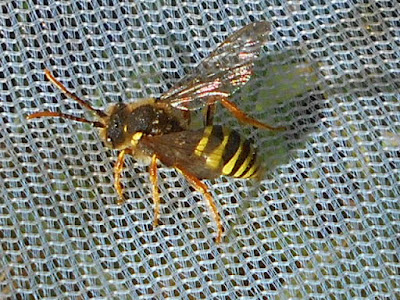In fact the afternoon turned out to be very pleasant, with warm sunshine and very little wind. I didn't want to venture far so I predictably strolled over to the local pocket park.
Quite a few butterflies were on the wing including a female Holly Blue. A couple of days ago I had photographed the males: today it was the females who seemed more frequent.
 |
| Male Holly Blue at Stefen Hill Pocket Park. 25 April, 2019 |
Their dark-edged wings make them very distinct. Is it coincidence that I saw males around for a few days before any females? Were the males lying in wait? Certainly it is the case that some spider species mature before the females. Once mated the females will go away and seek a food-plant for their eggs. Obviously holly is used but ivy, dogwood and gorse are acceptable.
 |
| Female Holly Blue. Stefen Hill Pocket Park, 28 April, 2019 |
Again, with Orange-tip butterflies I noticed males before any females, but that just may be a consequence of their more striking appearance.
The females lack the orange tips to their wings and they may be overlooked as another 'white' unless the mottled underside of the wings is visible. I should emphasise that both sexes have this wing mottling.
The Green Shieldbug, Palomena prasina, assumes a sombre brown colouring for the winter to blend with the dead leaves under which it may hide. Now it has assumed its bright summer green, and thus remains camouflaged.
 |
This Green Shieldbug had assumed its summer colours.
Stefen Hill Pocket Park, 28 April, 2019
|
A tiny ladybird had me puzzled. It had only two spots but certainly wasn't the Two-Spot Ladybird, Adalia 2-punctata; the pronotum (the white, black spotted area behind the head) was all wrong. This pronotal patterning made it clear that it was a 10-spot Ladybird, Adalia 10-punctata. This is known to be a very variable species, with some forms having no spots at all.
 |
A two-spotted Ten-spot Ladybird! Stefen Hill Pocket Park.
28 April, 2019
|
Ladybirds were to be seen everywhere. So far I have recorded five species and if I take a closer look at the pines at least one other may be present. This pair of 14-spot Ladybirds, Propylea 14-punctata, was doing its best to ensure that populations remain healthy, and Harlequin Ladybirds were similarly occupied.
 |
| 14-spot ladybirds in copula. Stefen Hill Pocket Park, 28 April, 2019 |
I left, rather pleased to see that in this (relatively) chemical-free environment, at least some wildlife is flourishing.









































